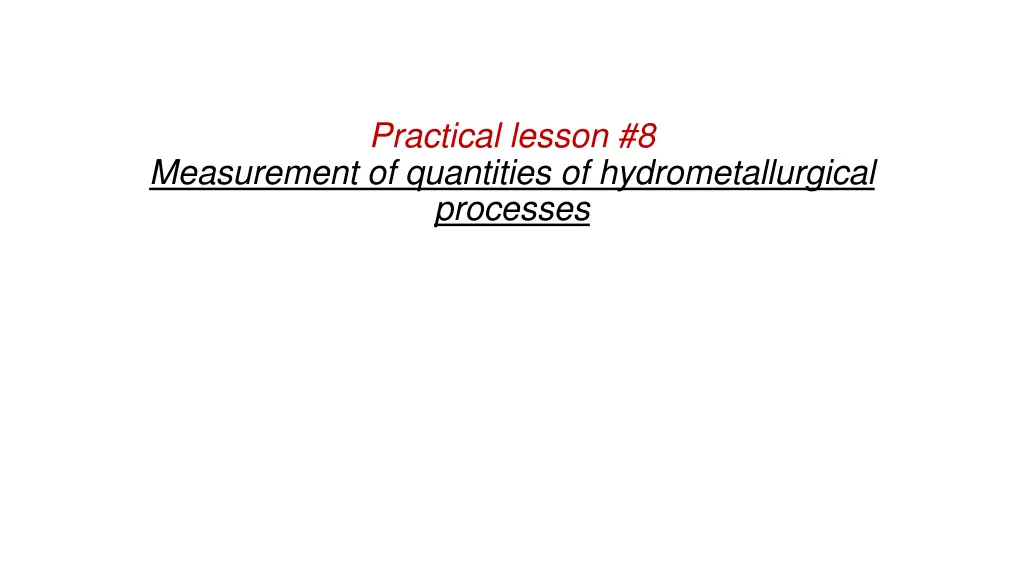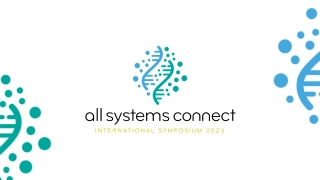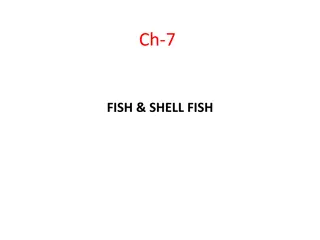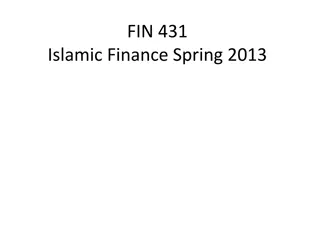
Understanding Solution Concentration in Hydrometallurgical Processes
Learn about solution concentration in hydrometallurgy, including the importance of solubility, types of solutions, and methods for presenting solution concentration like Molarity and Parts Per Solutions. Explore how concentration affects reactions in solutions used for extracting metals from minerals.
Uploaded on | 1 Views
Download Presentation

Please find below an Image/Link to download the presentation.
The content on the website is provided AS IS for your information and personal use only. It may not be sold, licensed, or shared on other websites without obtaining consent from the author. If you encounter any issues during the download, it is possible that the publisher has removed the file from their server.
You are allowed to download the files provided on this website for personal or commercial use, subject to the condition that they are used lawfully. All files are the property of their respective owners.
The content on the website is provided AS IS for your information and personal use only. It may not be sold, licensed, or shared on other websites without obtaining consent from the author.
E N D
Presentation Transcript
Practical lesson #8 Measurement of quantities of hydrometallurgical processes
Hydrometallurgy refers to the extraction of metals and production of inorganic substances from minerals through aqueous solutions. Although the entire amount of iron, lead, tin, and antimony and major production of copper and nickel come from the pyrometallurgical route, hydrometallurgy plays an important role in the extraction of reactive and rare metals and some common metals (e.g., aluminum, uranium, thorium, zinc, nickel, tungsten, and molybdenum). In some cases both the methods are involved. The mostly applied leaching agents are: 1. Water for leaching of calcines after sulphate or chloride roasting, e.g. leaching of Re2O7. 2. Aqueous solutions of salts: - Fe2(SO4)3: leaching of CuS, - NaCN: leaching of Au, - Na2S: leaching of Sb2S3, - Na2S2O3: leaching of Ag. 3. Chlorinated water: leaching of ZnS. 4. Acids mostly H2SO4. 5. Alkalic agents: - Especially leaching of bauxites and Al, - NH4OH: leaching of Cu and Ni. For conducting of hydrometallurgical processes, it is necessary to be able to prepare solutions of precise concentrations.
A solution has two components: the solute ( -) and the solvent (). The solvent ( ) is the substance in greater amount. It is usually a liquid, although it does not have to be. It is usually water, but it does not have to be. The solute ( - ) is the substance in lesser amount. Solubility The maximum amount of a substance that can be dissolved in a given volume of solvent is called solubility. Often, the solubility in water is expressed in gram/100 mL. A solution that has not reached its maximum solubility is called an unsaturated solution. This means that more solute could still be added to the solvent and dissolving would still occur. A solution that has reached the maximum solubility is called a saturated solution. If more solute is added at this point, it will not dissolve into the solution. Instead it will remain precipitated as a solid at the bottom of the solution. Thus, one can often tell that a solution is saturated if extra solute is present (this can exist as another phase, such as gas, liquid, or solid). In a saturated solution there is no net change in the amount of solute dissolved, but the system is by no means static. In fact, the solute is constantly being dissolved and deposited at an equal rate. Such a phenomenon is called equilibrium. In special circumstances, a solution may be supersaturated. Supersaturated solutions are solutions that have dissolved solute beyond the normal saturation point. Usually a condition such as increased temperature or pressure is required to create a supersaturated solution. Many ionic compounds are soluble in water, however, not all ionic compounds are soluble. Ionic compounds that are soluble in water exist in their ionic state within the solution.
Solution Concentration Concentration is defined as the abundance of a constituent divided by the total volume of a mixture. Quantitatively, the concentration of a solution describes the quantity of a solute that is contained in a particular quantity of that solution. Knowing controlling the stoichiometry of reactants for reactions that occur in solution. the concentration of solutes is important in There concentration. are different ways of presenting solution These include: Molarity and Parts Per Solutions., Normality
Mass Percentage Parts per Million and Parts per Billion Percentages are also commonly used to express the composition of mixtures, including solutions. The mass percentage of a solution component is defined as the ratio of the component s mass to the solution s mass, expressed as a percentage: mass percentage=mass of component mass ?? ???????? Very low solute concentrations are often expressed using appropriately small units such as parts per million (ppm) or parts per billion (ppb). Like percentage ( part per hundred ) units, ppm and ppb may be defined in terms of masses, volumes, or mixed mass-volume units. There are also ppm and ppb units defined with respect to numbers of atoms and molecules. 100% Mass percentage is also referred to by similar names such as percent mass, percent weight, weight/weight percent, and other variations on this theme. The mass-based definitions of ppm and ppb are given here: ppm=mass of solute mass ?? ???????? 106 The most common symbol for mass percentage is simply the percent sign, %, although more detailed symbols are often used including %mass, %weight, and (w/w)%. volume percentage=volume of component volume ?? ???????? ppb=mass of solute mass ?? ???????? 109 100%
Mole Fraction and Molality Several units commonly used to express the concentrations of solution components were introduced in an earlier chapter of this text, each providing certain benefits for use in different applications. For example, molarity (M) is a convenient unit for use in stoichiometric calculations, since it is defined in terms of the molar amounts of solute species: M=mol of solute L ?? ????????=n V Because solution volumes vary with temperature, molar concentrations will likewise vary. When expressed as molarity, the concentration of a solution with identical numbers of solute and solvent species will be different at different temperatures, due to the contraction/expansion of the solution. More appropriate for calculations involving many colligative properties are mole-based concentration units whose values are not dependent on temperature. Two such units are mole fraction and molality. The mole fraction, X , of A component is the ratio of its molar amount to the total number of moles of all solution components: mol of all components=n A mol A XA= ? Molality is a concentration unit defined as the ratio of the numbers of moles of solute to the mass of the solvent in kilograms: mol of solute mass of solvent (kg)=n m= M Since these units are computed using only masses and molar amounts, they do not vary with temperature and, thus, are better suited for applications requiring temperature-independent concentrations, including several colligative properties, Normality - It is defined as the gram equivalent weight per liter of solution. Unit: equivalent/L Formula: N=Number of grams Equivalent of solute Volume ?? ???????? =g eq V Number of grams Equivalent weight of solute= g Number of gram equivalents of solute= eq
Problem #1: If you dilute 175 mL of a 1.6 M solution of LiCl to 1.0 L, determine the new concentration of To dilute a solution means to add more solvent without the addition of more solute. Of course, the resulting solution is thoroughly mixed so as to ensure that all parts of the solution are identical. the solution. Solution: M1V1= M2V2 (1.6 mol/L) (175 mL) = (x) (1000 mL) The fact that the solute amount stays constant allows us to develop calculation techniques. x = 0.28 M Note that 1000 mL was used rather than 1.0 L. Remember to keep the volume units First, we write: consistent. _____________________________________________________________________________ moles solute before dilution = moles solute after dilution Problem #2: You need to make 10.0 L of 1.2 M KNO3. What molarity would the potassium nitrate solution need to be if you were to use only 2.5 L of it? Solution: M1V1= M2V2 (x) (2.5 L) = (1.2 mol/L) (10.0 L) x = 4.8 M From rearranging the equation that defines molarity, we know that the moles of solute equals the molarity times the volume. So we can substitute MV (molarity times volume) into the above equation, like this: M1V1= M2V2 Please note how we use the molarity unit, mol/L, in the calculation rather than the molarity symbol, M. _____________________________________________________________________________ Problem #3: How many milliliters of 5.0 M copper(II) sulfate solution must be added to 160 mL of water to achieve a 0.30 M copper(II) sulfate solution? The "sub one" refers to the situation before dilution and the "sub two" refers to after dilution. Solution: M1V1= M2V2 (5.00 mol/L) (x) = (0.3 mol/L) (160 + x) 5x = 48 + 0.3x 4.7x = 48 x = 10. mL (to two sig figs) This equation does not have an official name like Boyle's Law, so we will just call it the dilution equation. The solution to this problem assumes that the volumes are additive. That's the '160 + x' that is V2.
DO YOURSELF What is the molar and normal concentrations of each solution? 1. 8.7 g of calcium bromide in 250 mL of solution 2. 9.8 g of lithium sulfate in 300 mL of solution 3. 2.4 g of NaCN in 750 mL of solution 4. 14.2 g of iron(III) nitrate hexahydrate in 300 mL of solution What is the percent concentration of each solution? 1. 10 g salt and 70 g water are mixed and solution is prepared. Find concentration of solution by percent mass. 2. If concentration by mass of 600 g NaCl solution is 40 %, find amount of solute by mass in this solution 3. If we add 68 g salt and 272 g water to 160 g solution having concentration 20 %, find final concentration of this solution To dilute a solution 1.If you dilute 375 mL of a 1.2 M solution of LiCl to 1.0 L, determine the new concentration of the solution. 2. You need to make 1000.0 L of 0,1 M NaCN for Gold leaching. What molarity would the NaCN solution need to be if you were to use only 20,2 L of it? 3.How many liters of 1.0 M copper(II) sulfate solution must be added to 0,3 L of water to achieve a 0.050 M copper(II) sulfate solution?






















